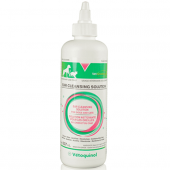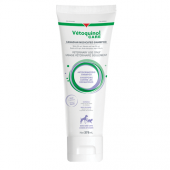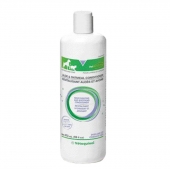1. Protect your pet against parasites.
Using year-round parasite prevention remains the safest way to protect your pet—but it becomes absolutely essential during spring when dormant insects and parasites become active again. Ticks resume hunting for food whenever temperatures rise above 4°C for a few hours, which commonly happens before winter is even over. Check your pet for ticks whenever they return from outside, especially around their head, neck, ears, and back.
In addition, the puddles left behind by melting snow provide mosquitoes with the perfect environment in which to lay their eggs. These annoying, flying pests are more than a nuisance—the Centers for Disease Control and Prevention considers them the world’s deadliest animal[1] because of the numerous diseases their bite can spread. In some parts of Canada, mosquitos can transmit heartworm, which if untreated can lead to heart failure in dogs and cats.
2. Be careful with spring cleaning products.
The new season is the perfect time to thoroughly clean the house and garage. Read the label on every cleaning product before use, for specific pet instructions. Some leave behind a residue that needs to dry for several hours before the surface can be safe for your four-legged friends. Store cleaning products out of reach and clean up any spills immediately—cats and dogs may be tempted to lap up puddles because of their sweet smell.
3. Check your door and window screens for holes and tears.
Door and window screens should be stored away during winter—to prevent moisture from remaining trapped on the surface and encouraging mould or mildew. As you reinstall your screens, inspect them thoroughly for any signs of damage and make the necessary repairs to keep your home mosquito-free. You also don’t want your dog crashing through after spotting a squirrel outside or your cat widening any tears as they push against the screen.
4. Know which plants are toxic to pets.
Whether adding new houseplants or expanding your outside garden and flower beds, remember that many common species can be highly toxic to cats and dogs if chewed on or ingested. These include tulips, oleanders, lilies, daffodils, and azaleas. For more information, review the ASPCA’s complete list of safe and unsafe plants for cats and dogs.
5. Provide your outdoor pet with water and shelter.
If your pet is allowed to, they may spend much more time outside on warm, sunny days. Make sure they always have access to fresh water, as well as food if you’ll be gone for a while. Your pet also needs shelter in a dry place away from the sun, such as a doghouse in the yard or a sturdy cardboard box with bedding on the porch in case the day grows hot or if it unexpectedly starts raining.






